How To Build A Daily Routine With A Physical Planner
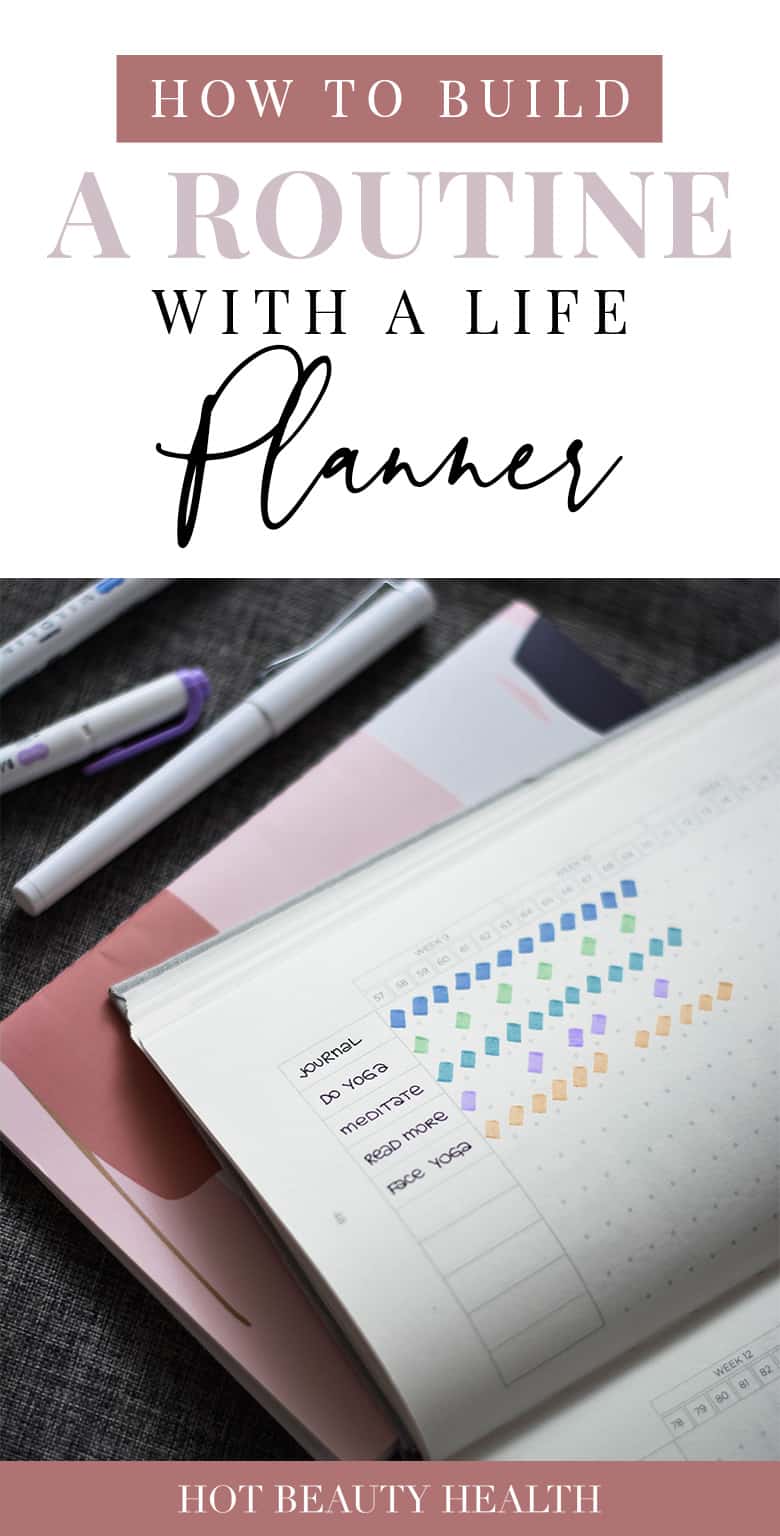
The little things you do every day on a regular basis would help you achieve bigger things in life. When you have a proper routine or schedule in place, you usher in ease and stability into your life. Routines help with being consistent and time management. They also help you build healthy habits. Having said that, it’s important you create a routine based on things that interest or motivate you. A routine without purpose is like a football match without goal posts.
What are your daily routines? We all have some sort of routine, but honestly the best ones are intentional, purposeful and have a goal behind it.
A physical planner is designed to simplify your routines. To bring organization and change your life for the better every single day.
In this article, we’ll take a look at things you could do to create a routine with a life planner or any physical planner that helps you make better use of your time and sets you on the road to success.
Step 1. Figure Out What Motivates You
What’s your why? Maybe you’re tired of feeling you have less hours in the day or you want to start going to bed at an appropriate time? Whatever your motivation is, make sure you don’t start a routine because your friend has one or the Internet advised you to do so. The motive behind a routine is absolutely critical. If you’re clear on your intention behind starting a routine, you’ll be more motivated to get it done.
Step 2. Make a List
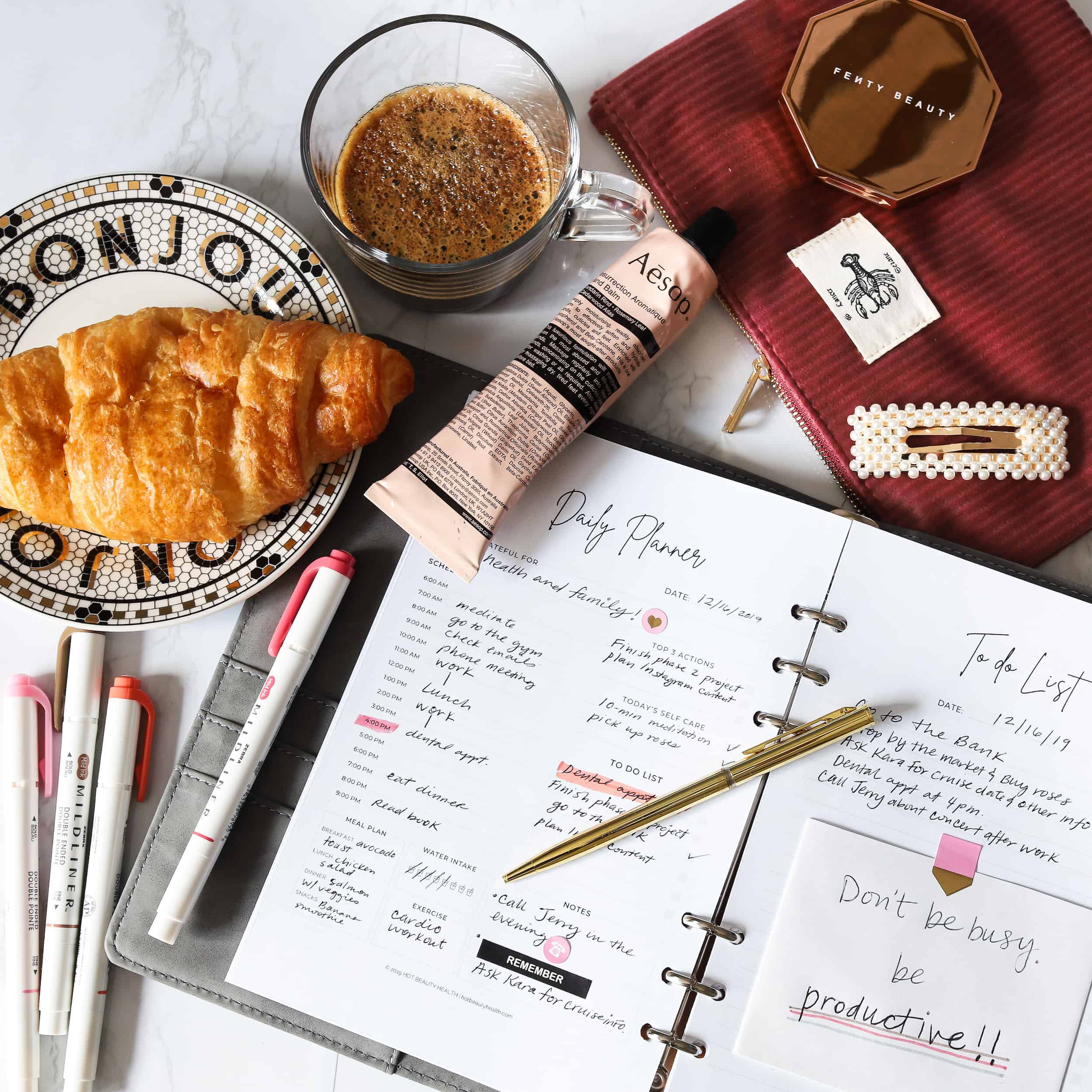
Prepare a list writing down all the things (personal and professional) you must get done every day. If your brain is overflowing with tasks, don’t get intimidated. Put them all down on paper as you can always narrow down your to-do list later. If you can’t remember everything, jot things down throughout the day.
To help you start, think about what you’re already doing. For example, your morning habits might include:
- Self care: Brushing your teeth, taking a shower
- Having breakfast or coffee
- Morning rituals: meditation, journaling
- Going to the gym
- Packing what you need for the day: keys, laptop, notebook
If you need help refreshing your memory on all the tasks you do, ask yourself these questions:
- What do I need to do before going to work?
- Which tasks should I do to get my kids to school?
- What errands do I run daily?
- Do I have my meals planned out for the day?
- What things do I need to organize in my house?
Step 3. Add Self Care Items
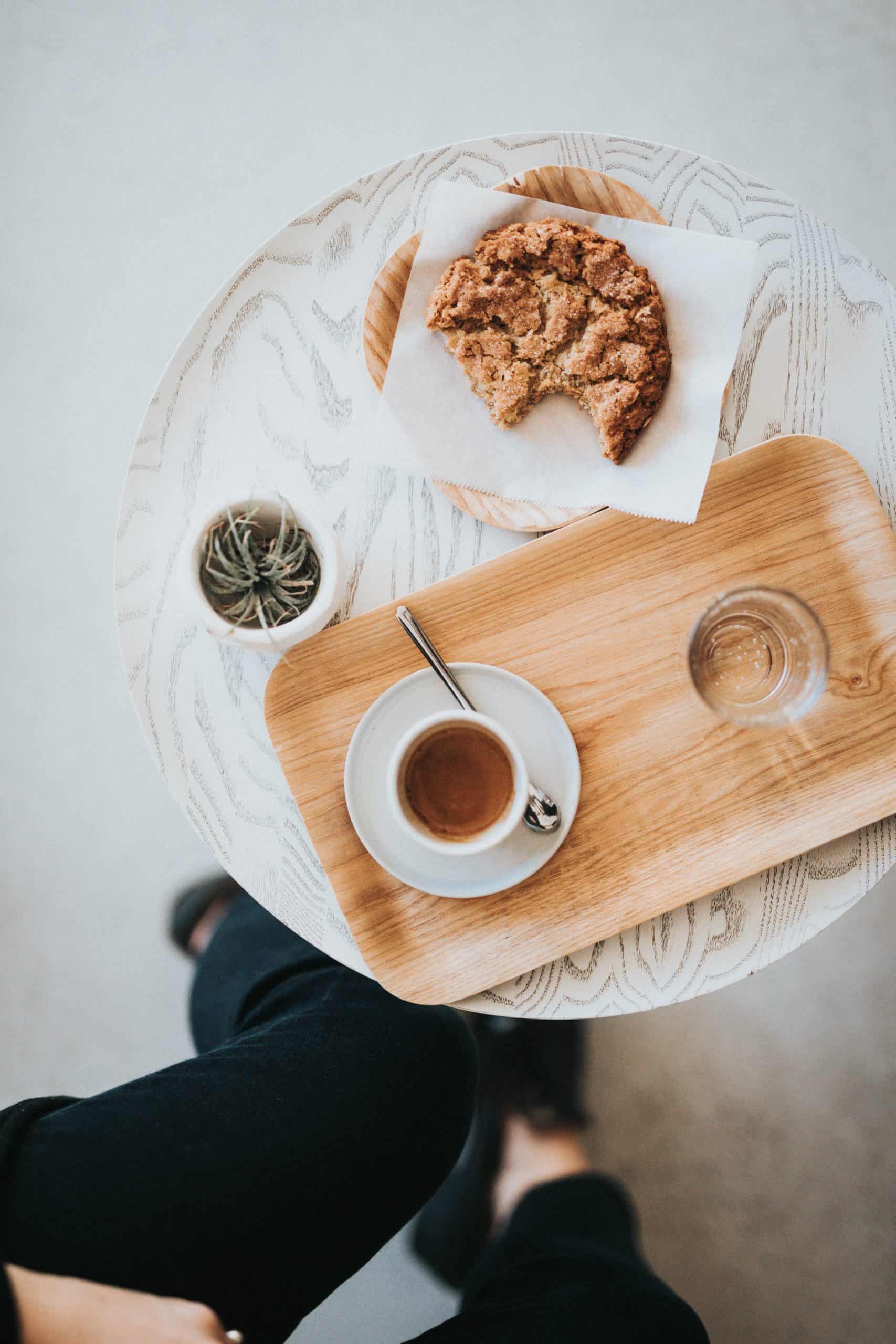
Adding self care to your routine is something I highly recommend. It’s important to give your mind, body and soul some love and intention everyday and you can do so at home or work. Even if you’re super busy, you can still implement tiny self care habits. Consider adding things that would do you good on a personal level.
For instance, practicing yoga, reading before bed, making a smoothie, etc. are things that you may consider adding to your schedule. Make sure you come up with at least eight to 10 positive tasks that could be potentially added to your to-do list. Then narrow down the tasks to three or four items so that you could realistically do them day in and day out or switch them up each day. Meditating, journaling, taking a walk, working out, taking off makeup before bed, etc. are all self-care items you may consider adding to your everyday.
READ: How much time do you spend on self care? (A full list of ideas)
Step 4. Structure Your Day
Structure your day with things you must absolutely do and things you would like to do. Get rolling with the must-do things first so that you never skip or miss them. Once done, decide the amount of time you’d like to set aside for each activity.
READ: 16 Bullet Journal Ideas To Take Your Planning To The Next Level
I’ve been using planners and journals for years and I’ve found that “time-blocking” gives me a lot more freedom to be productive and make the most of my time.
What is Time-Blocking?
It’s when you plan out every moment of your day in advance and dedicate specific time “blocks” for certain tasks and responsibilities. I know you may think doing this will turn you calendar into a chaotic mess but you’ll actually get the opposite affect. You’re filling your calendar with the tasks and things you want to do which makes it harder for others to steal your time.
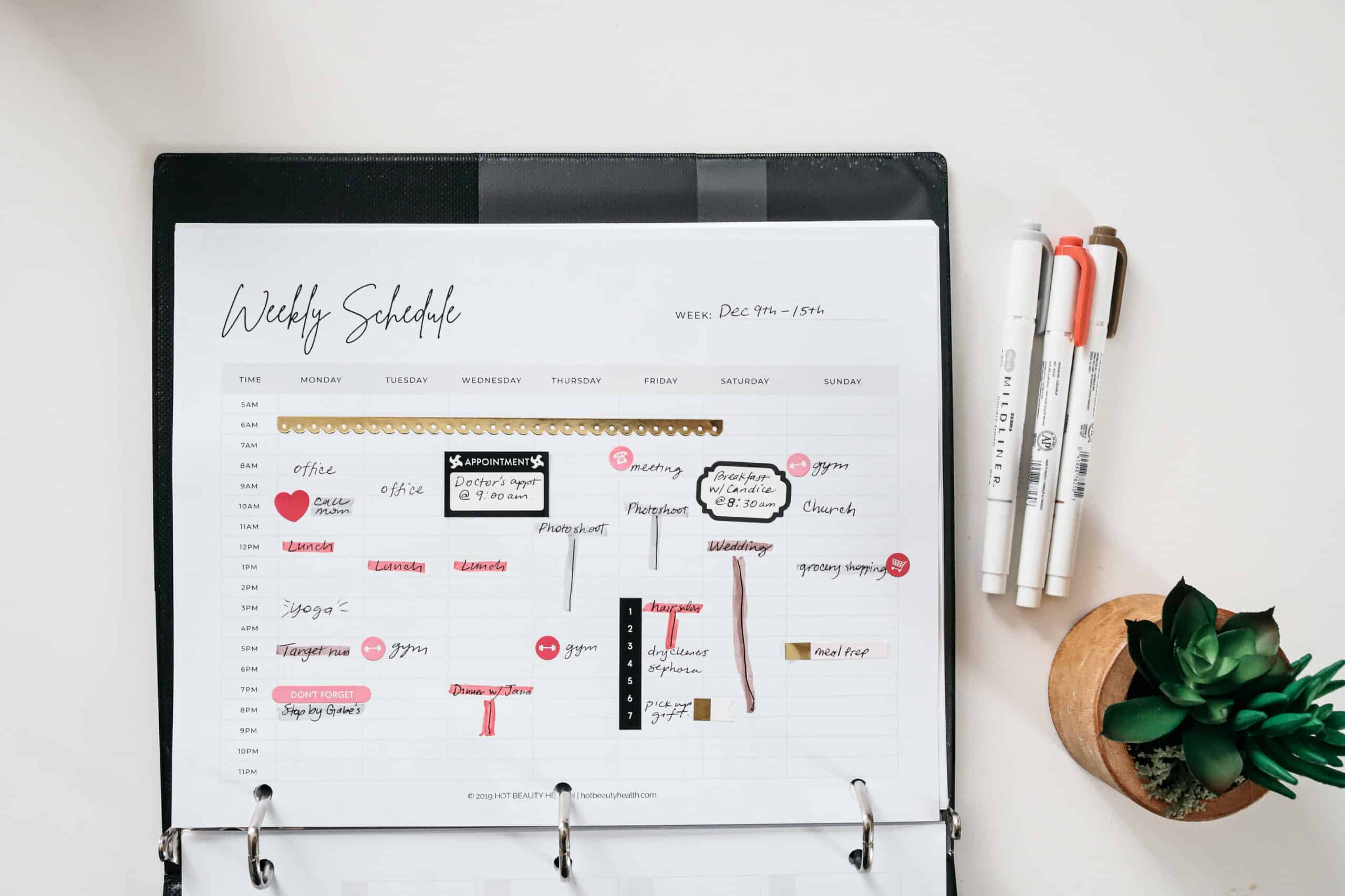
For example, inside my latest product, The Your Life Planner Pack, I use the weekly schedule printable and plan out each day of the week in time blocks by the hour from early morning to late at night. This allows flexibility and will absorb any unpredictable situations that happens in life.
Think about the specific period during which you would be at your productive best and delegate the major tasks to that time period.
Step 5. Get Specific
To be effective, you must be specific with your tasks. For instance, if having breakfast is on your list, you should use the time-blocking system and specify at and by what time you will have it. It’s all about the details. Get as detailed as you possibly can.
For example, your daily routine might look something like this:
- 7:00 am: Wake up and brush teeth
- 7:15 am: Meditate
- 7:25 am: Shower and get dressed
- 8:00 am: Make breakfast
- 8:30 am: Leave the house
Step 6. Remain Flexible
Life is unpredictable. Things will not always go as plan. So always make room for contingencies or unexpected events in your plan. That’s why time-blocking is so awesome because it leaves room for that. The goal with building a routine is not to exhaust all the time available to you during your wake hours, but to make good use of them to get the important things done.
When you have spare time for things you didn’t plan for, you can always add it to your schedule. That’s the power of having a physical planner.
Step 7. Test Drive Your New Routine
Try your new routine for a brief period to ascertain how feasible or practical the schedule is. A month of test-driving would be the ideal amount of time. The 30 days would be long enough to help you ascertain what tasks are actually adding to your productivity or life in general, the adjustments you could make, etc.
READ: How to Use a Planner Effectively To Boost Productivity
If there are things not working, tweak them or trash the activity completely. After you’ve assessed things and made necessary changes, try the new routine out for another one-month period. Keep repeating this until a point where you don’t feel the need to make any more changes to your routine.
The Your Life Planner Pack
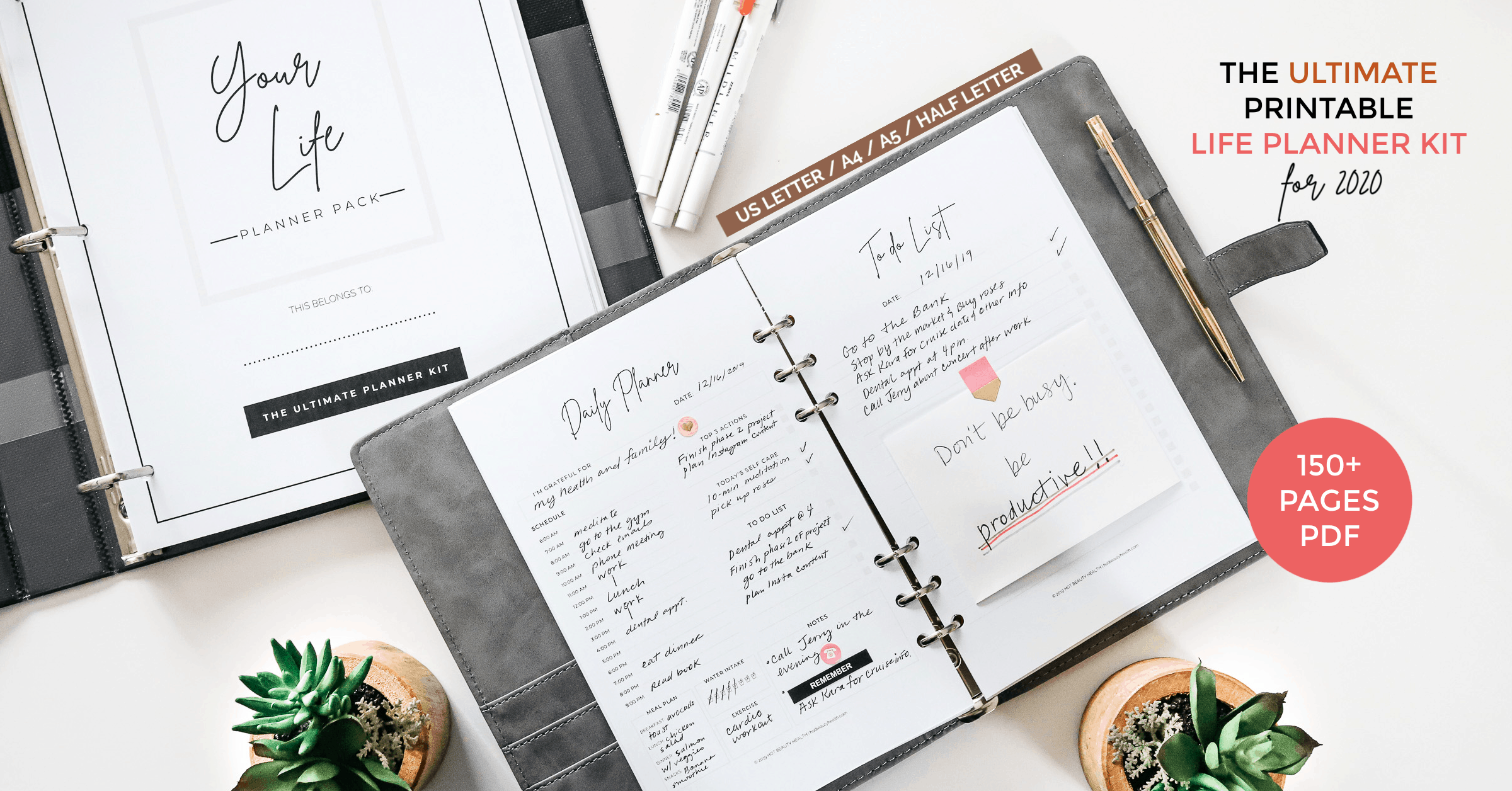
Want this year to be the most productive and life changing year ever? My latest product, The Your Life Planner Pack is your best tool to create your ideal life.
This planner pack contains 8 different planner printables, from goal planning and finance to wellness and meal planning, bundled into one (150+ pages) to help jumpstart your productivity and crush your goals in all areas of your life!
